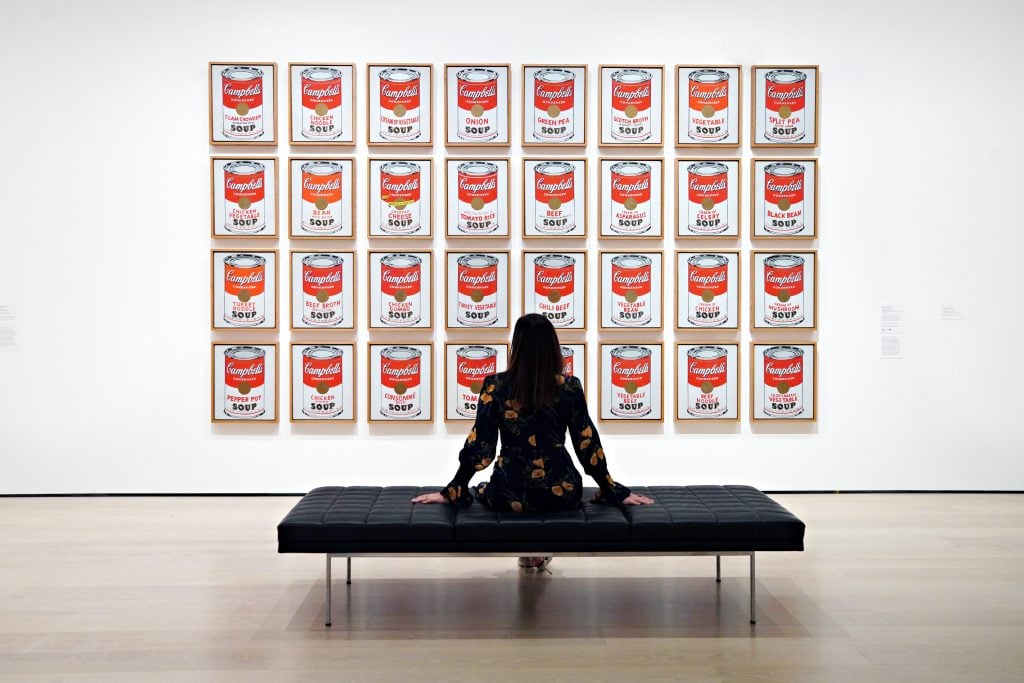Art History
Art Bites: How MoMA Put Andy Warhol’s Soup Cans in Order
MoMA acquired the paintings for a reported $15 million in 1996.

What’s the deal with Leonardo’s harpsichord-viola? Why were Impressionists obsessed with the color purple? Art Bites brings you a surprising fact, lesser-known anecdote, or curious event from art history. These delightful nuggets shed light on the lives of famed artists and decode their practices, while adding new layers of intrigue to celebrated masterpieces.
The story goes that when Andy Warhol debuted Campbell’s Soup Cans at L.A.’s Ferus Gallery in 1962, a neighboring gallery mounted a pyramid of the supermarket staple with a sign offering the “original” thing at “two for 33 cents.”
A gimmick perhaps, but certainly illustrative of the provocation Warhol caused. Fifty years on, MoMA faced a different kind of headscratcher when it came to staging “Andy Warhol: ‘Campbell’s Soup Cans’ and Other Works, 1953-1967”. Namely; how should the museum hang the series of 32 paintings?
To backtrack, MoMA had acquired the 20-by-16 inch works from Irving Blum for a reported $15 million in 1996. For the preceding decade, Blum had loaned the series to National Gallery of Art in Washington D.C. Before that, Blum had held onto the collection, reversing his initial decision to sell the paintings individually. He paid Warhol $1,000 for the privilege.
The dilemma facing MoMA’s curators was that, except for the original Los Angeles exhibition, the cans had largely been shown in a four-by-eight grid formation (including during sporadic stints on Blum’s dining room wall, wherever else). It was an iconic arrangement, one that echoed the visual repetition Warhol later used in his “celebrity” and “disaster” series.
At the Ferus exhibition, however, the cans had been arranged in a line on wooden boards, as though items on a grocery store shelf. MoMA decided to revive the presentation and since Warhol had left no instructions it opted for the chronological order in which Campbell’s had introduced the soups to market. Tomato, which debuted in 1897, came first.
Today, Warhol and the playful appeal of the Pop Art movement are ubiquitous. They weren’t in 1962. Warhol’s quip at the time “I want to be a machine” would later emerge in his factory studios that churned out work via his silkscreen printing techniques. The soup cans led the way. Warhol projected the image onto canvas, traced the outline, and carefully painted the interiors (he also used a stamp for the fleur-de-lys pattern).
The paintings are imperfect, with noticeable pencil marks and irregularities of paint. MoMA’s decision to place the canvases side-by-side and at eye level highlighted Warhol’s imperfect process.





